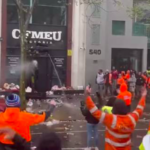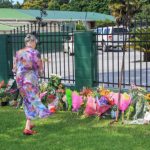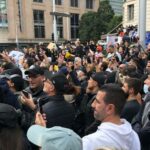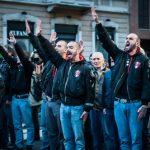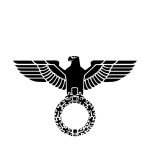The Long Warned of Far-Right Threat Has Descended
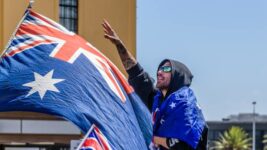
The rise of the far-right has been of increasing concern across western liberal democracies over recent years.
The election of Donald Trump, Brexit, and the spike in the right-wing vote throughout Europe have all indicated a drift towards authoritarianism, which has only been compounded by the extremes of the COVID-19 pandemic era.
This nation was founded on white supremacist policies, although it’s since taken a more multicultural path. Mid-way through last decade saw grassroots backlash against this pour out onto the streets with groups like Reclaim Australia or, at the professional level, there was the Q Society.
But what started as an expression of your garden variety Australian white nationalism has escalated.
Over the last two years, ASIO, the AFP and NSW Police have all reported a significant uptick in far-right activity, with a marked increase since the onset of COVID-19.
“Many of these groups and individuals have seized on COVID-19, believing it reinforces the narratives and conspiracies at the core of their ideologies,” said ASIO director general Mike Burgess during a Senate estimates hearing in October 2020.
“They see the pandemic as proof of the failure of globalisation, multiculturalism and democracy, and confirmation that societal collapse and a ‘race war’ are inevitable,” he added.
The narrative around the burgeoning Australian freedom movement is now clear: not everyone turning out to its impressively large demonstrations harbours far-right white supremacist tendencies, but those that do are there with bells on.
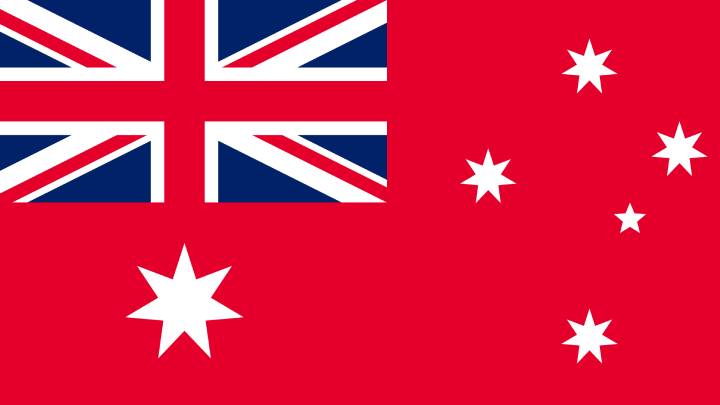
Latent potential
The bizarre aspect to this expression of the far-right is it’s rallying against the propensity towards authoritarianism that government-imposed pandemic lockdowns, border closures and vaccine mandates entail, yet there are latent tendencies towards authoritarianism within these crowds.
As the movement has grown, so too has its political allegiances. These tend to be ultraconservative figures, such One Nation leader Pauline Hanson and Liberal Nationals MP George Christensen.
The movement has recently aligned itself with the United Australia Party. Former Liberal MP and vocal COVID conspiracist Craig Kelly is the main electoral candidate for the party that’s the plaything of mining magnate Clive Palmer, whose real aim is to keep his fossil fuel investment options open.
Then there’s the movement’s links to seasoned far-right groups. Certain event organisers have been found to be white supremacist personalities. The Proud Boys are often cited as being associated with it. And questions have been raised about the role of the Australia Peacemakers at Victorian events.
The predominately Anglo Australian turnouts at the demonstrations rallying under the Australian Red Ensign at least have visual associations with the Cronulla riots and other far-right rallying events. But to label the whole movement as fascist is probably an overreach.
Protofascist refers to ideologies and cultural movements that carry within them the potential to develop into fascism. A mass movement that is marked by ultraconservative and often racist political support, and overt expressions of nationalism on the ground, might be termed protofascist.
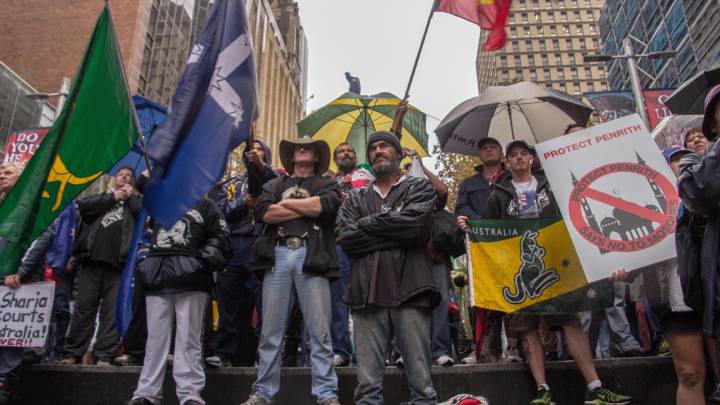
True blue Aussie terror
The March 2020 Christchurch massacre, which saw a white Australian male gun down 51 people worshipping at two mosques in New Zealand, has served as a far-right extremist wakeup call in this country – if not something of a belated one.
In the wake of the storming of Washington’s Capitol Hill by Trump supporters in January, members from Australia’s latest core white supremacist group – the National Socialist Network – were seen burning crosses, whilst displaying Nazi insignia, in the Victorian Grampians.
Following years of calls, the Australian government finally designated a white supremacist group as a proscribed terrorist organisation in August this year, and the Home Affairs Department announced last week that a second such group is about to be added to the list.
The long-term inclination of the Coalition government, however, is to hesitate in reproaching these extremist groups as the far-right white vote is part of its constituency. And this is especially so at present, in relation to Morrison and the freedom vote.


